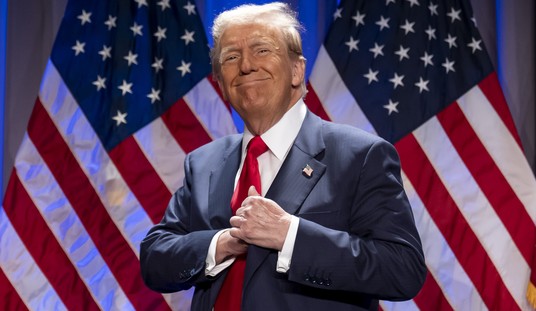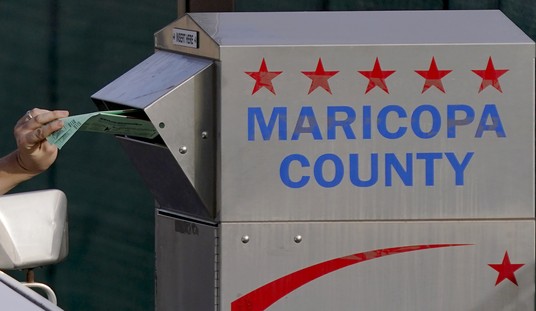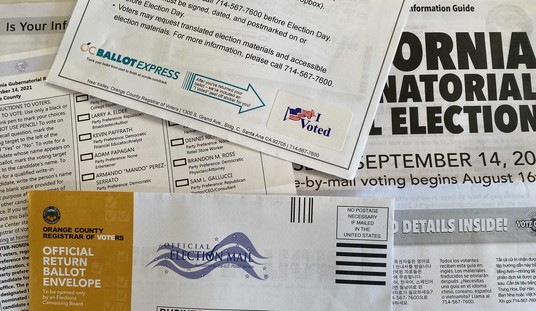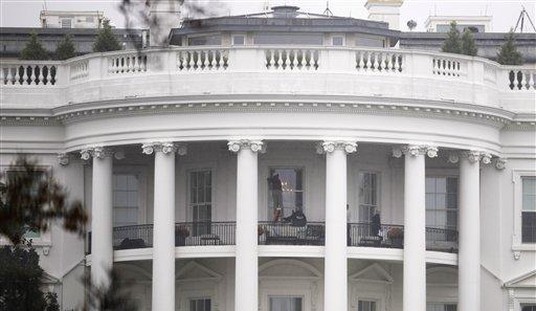Here’s another item from the Strategy Page: “Hamas Feels The Wrath Of Iran”. The basic story goes like this, while Israel is being exhorted to “end the cycle of violence”, Hamas has been going after Shi’ites after Iran stopped paying them money. That money bought Shi’ites protection from Sunni Islamic radical groups, who were willing to leave their sectarian rivals alone “in return for cash and weapons”.
But now that the money has dried up, so has the affection between the two groups. The Telegraph explains how it works: no money, no lovey-dovey.
According to Haaretz, the Israeli newspaper, a group of armed Hamas fighters “brutally attacked” Shi’ite worshippers in the Gaza Strip last Friday, in part of a crackdown on Shi’ite groups that was sparked “by Hamas’ fear of growing Iranian influence in Gaza.” This is what happens with the Ayatollah stops paying the bills: up until a few months ago, “Iranian influence” was the sole reason for Hamas’ existence.
Not too long ago both groups presented a united front against the hated Jew. “The two men most responsible in the last decade for ensuring that the Palestinian party of jihad was kept thoroughly flush with arms and cash were Qassam Suleimani, head of the Iranian Revolutionary Guard Corps, and Mouhsen Hussein Azahi, Iran’s intelligence minister.”
Since its 2007 seizure of Gaza, Hamas has been on the receiving end of Persian largesse that includes 120mm Grad rockets, Raa’d anti-tank missiles (Iranian knock-offs of the Russian-made Sagger variety), explosively formed penetrators (EFPs) which can cut through eight inches of steels, and the tech savvy to construct and place a host of improvised explosive devices (IEDs). Hamas operatives used to spend anywhere between a month and six months training in Iranian camps learning how to fire guns, as well as drinking deep of the Khomeinist-flavoured ideology – without quite making the full leap to Shia Islam. So strong was the nexus between the Sunni terrorist organisation and the Shi’ite theocracy that, a senior agent of the Izz al-Din al-Qassam Brigades – the military wing of Hamas – told The Sunday Times in March 2008 that “Anything [the Iranians] think will be useful, our guys there email it to us right away.”
But that was then. This is now. When Hamas decamped from Damascus in response to President Assad’s current troubles the Iranians were not amused. “As punishment for going wobbly on a regional ally, Iran has reportedly cut some or all of its funding to Hamas, forcing the group into a budgetary shortfall that’s been somewhat compensated by Turkish and Qatari funds.”
Meanwhile, the mullahs’ new favourite proxy in Palestine is now Islamic Jihad, which will try to curry support by saying that Hamas has gone soft. These chaps are converting to Shia Islam in a bid to reclaim Iranian hegemony in Gaza. And Hezbollah, which is more a puppet of Iran than a mere proxy, has cast its sectarian lot with Assad by helping him kill Syrian protestors and thereby earning it the enmity of the entire Sunni Arab world.
This suggests that ‘freedom-fighter’ politics in the region is less dependent on high minded principles than the Left would everyone believe. Perhaps the controlling dictum is “if you want a friend, buy a dog.” That in turn, makes one wonder how durable a peace treaty between Palestine and Israel might be unless it is founded on the more permanent basis of protection payments. Love and notions of human brotherhood seem to count for very little in the political calculus of the area.
What the Arab Spring has demonstrated is that the problems in the region go far deeper than the Arab-Israeli conflict. That may be part of the picture, but it is certainly not the whole of it. It is the lack of civil society, the widespread corruption and the cynical politics of the gun which are the true roots of instability.
Sometimes I am tempted to believe the way the world actually works is that the masses are motivated by ideas — like nationalism, religion or ideology — but leadership in every organization — the inner core of initiates — do things for money. Napoleon once said he could make men die for bits of colored ribbon. But when princes confer by themselves the currency is fear, power or money.
Every militant organization has its gallery of revolutionary saints. But you begin to notice that their martyrdom was in fact the whole point of their recruitment. Martyrdom was their vocation. They were never suited for power. The moment when a young man comes to see the world as played in this manner represents at one the same time the birth of a leader and the demise of an idealist. The New York Times described the moment when Barack Obama rejected community organizing as an effective means of change.
Later that night, Mr. Obama called Johnnie Owens, whom he would hire as a community organizer. Never had Mr. Obama sounded so downcast or frustrated, Mr. Owens said.
“Barack basically talked about how tough it was to generate real results through organizing and that it was embarrassing to him to have the residents out of control,” he recounted.
“He wondered if he had done a good enough job preparing them for the meeting,” Mr. Owens said. “He sounded angry at himself. He was questioning the whole methodology.”
Mr. Obama had risen to executive director of the Developing Communities group, but the demanding hours, small victories and low pay took a toll on him, and he decided to leave.
“ ‘We are not making large-scale change, and I want to be involved in doing that,’ ” Mr. Kellman said Mr. Obama had told him.
Kellman, his organizing mentor, amplified on the moment when Obama made the jump from ‘organizer’ to leader in an interview with PBS .
One of the things that I think it’s important to understand about Barack’s organizing career is that he was sort of a hybrid organizer. He was [a Saul] Alinsky organizer, … but he also was a civil rights organizer. The difference is that the civil rights organizer organizes a movement based on idealism, and the Alinsky organizer talks about self-interest. … And what you would learn from that is that: Don’t pretend the world as it is is the world as you would like it to be. Get realistic …
I don’t really know he’s going to go there [electoral politics] until he tells me he’s leaving organizing; he’s going to go to law school. But when he tells me that, he tells me why, and it makes sense: what he wanted to see was large-scale change, and community organizing changes small issues in people’s lives, and we transform people’s lives in terms of teaching them skills and giving them hope they didn’t have before. But it structurally was not going to change racial discrimination; it was not going to change poverty in the United States. There simply would not be enough power there. That [change] would only come through electoral politics.
To anyone who has been an Alinsky organizer, the moment Kellman describes was not just a change of emphasis but an act of leaving one faith for another. For nothing keeps organizers working for the low pay and long hours described as much as the belief that they — more than the leaders whose ranks Obama was hoping to join — were the motive wheels of history. For Obama to declare that community organizing was futile and the rise to the leadership was the true path, was nothing less than losing his religion.
And what of his new one? Perhaps more than the public realizes, Obama may have come believe that horsetrading is in fact how the world works. That ideology, though deeply held, is less important than money and power; and therefore there is no Islamic militant or enemy of America — certainly at the leadership level — who cannot in the long run be bought off. He would get that impression in Chicago, wouldn’t he? And it would go a long way to explaining his obsession with making a deal.
How to Publish on Amazon’s Kindle for $2.99
The Three Conjectures at Amazon Kindle for $1.99
Storming the Castle at Amazon Kindle for $3.99
No Way In at Amazon Kindle $3.99, print $9.99










Join the conversation as a VIP Member